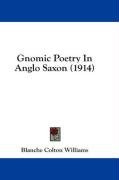our short story writers

Purchase of this book includes free trial access to www.million-books.com where you can read more than a million books for free. This is an OCR edition with typos. Excerpt from book: CHAPTER III DOROTHY CANFIELD IN the twentieth century it is possible for one, before she is forty years of age, to be a doctor of philosophy, master of half a dozen languages, a successful novelist, story-writer, wife, mother, and war worker. Dorothy Canfield is all of these, and in addition, after much travel and living abroad, she is an American of Americans. Her Americanism is the essence of her greatness and her significance for the literature of to-day and to-morrow. It is the foundation on which rise her achievements. How has she managed to do so much ? First, the circumstances of her birth were favorable. Daughter of the late James Hulme Canfield, who was President of the University of Kansas at the time she was born, and his wife Flavia Camp Canfield, artist, Dorothea Frances made her entry dowered with unusual intelligence and aesthetic sensibility. She was born, February 17, 1879, in perhaps the most American region of America, if the land of the free be symbolized by wind-blown skies and boundless plains. The Mid- West setting, however, was balanced by the girl'sacademic activities at Lawrence and later at the Ohio State University, of which her father was President when she took her A. B. degree in 1899. Thus briefly are indicated the Americanism and the general culture which made possible a Dorothy Canfield. The languages, German, Italian, Spanish, and Danish are explained by her travel; French she acquired in her mother's studio in Paris. When her father accepted the Chair of Librarian at Columbia University, she extended her researches in the graduate school recently opened, and in 1904 took the doctorate degree in Comparative Literature. She combined her knowledge of French and English in her thesis: Corneille and Racine in England (1904). Meantime, in ...
Info about the book
Author:
Series:
Unknown
ASIN:
B002WU59BQ
Rating:
3/5 (5)Your rating:
0/5
Languge:
English
Users who have this book
Users who want this book
What readers are saying
What do you think? Write your own comment on this book!
write a commentif you like our short story writers try:
Do you want to read a book that interests you? It’s EASY!
Create an account and send a request for reading to other users on the Webpage of the book!




